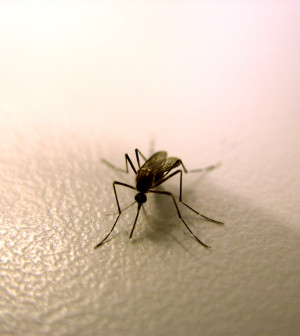- Skip Storing This Everyday Product in the Fridge Door
- Green Tea + B3 Pairing May Boost Brain Health
- Navigating Your Midlife Crisis: Embracing New Possibilities
- City Raccoons Showing Signs of Domestication
- Mapping the Exposome: Science Broadens Focus to Environmental Disease Triggers
- One Week Less on Social Media Linked to Better Mental Health
- Your Brain Changes in Stages as You Age, Study Finds
- Some Suicide Victims Show No Typical Warning Signs, Study Finds
- ByHeart Formula Faces Lawsuits After Babies Sickened With Botulism
- Switch to Vegan Diet Could Cut Your Greenhouse Gas Emissions in Half
Columbus Did Not Bring Syphilis Back to Europe, Research Shows

It’s a common notion that after discovering America, Columbus and his crew then brought back the scourge of syphilis to Europe.
But there’s now conclusive evidence that the theory simply isn’t true, and syphilis was already present in the Old World long before Columbus set sail in 1492.
Researchers at the Medical University of Vienna, Austria, say they have discovered evidence of congenital syphilis — the type of illness passed from a mother to her fetus — in skeletons buried as early as 1320 in the cathedral square of St. Polten, Austria.
The investigators, from the university’s Center for Anatomy and Cell Biology, cut away extremely thin slices of bones and teeth of the skeletons to examine under the microscope.
The teeth provided especially good evidence supporting syphilis infection, said a team led by Karl Grossschmidt and Fabian Kanz, of the university’s department of cell and developmental biology.
“We found so-called Hutchinson’s teeth with central notches and converging edges and mulberry molars, which are characteristic signs of syphilis,” the authors explained in the study.
“The discovery clearly refutes the previous theory,” Grossschmidt and Kanz wrote. They say that further research, using high-tech molecular biological testing and other methods, will be used to confirm the findings.
The 14th-century skeletons examined in the research have plenty of neighbors. The researchers reported that excavations have already recovered more than 9,000 skeletons from St. Polten cathedral square, the largest number unearthed from any archaeological site in Europe.
The study was published online Nov. 18 in the Journal of Biological and Clinical Anthropology.
More information
The U.S. National Institute of Allergy and Infectious Diseases has more about syphilis.
Source: HealthDay
Copyright © 2025 HealthDay. All rights reserved.










